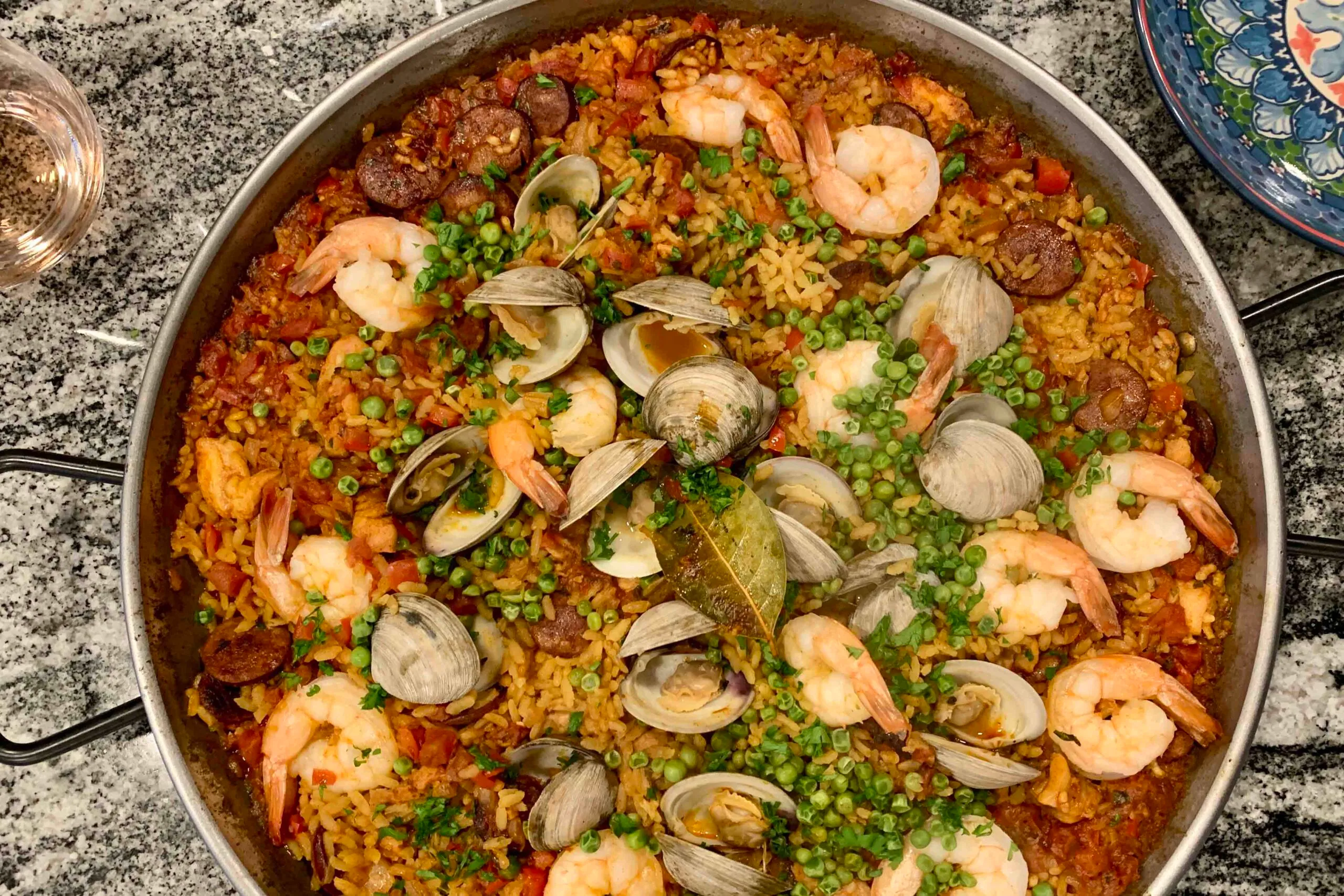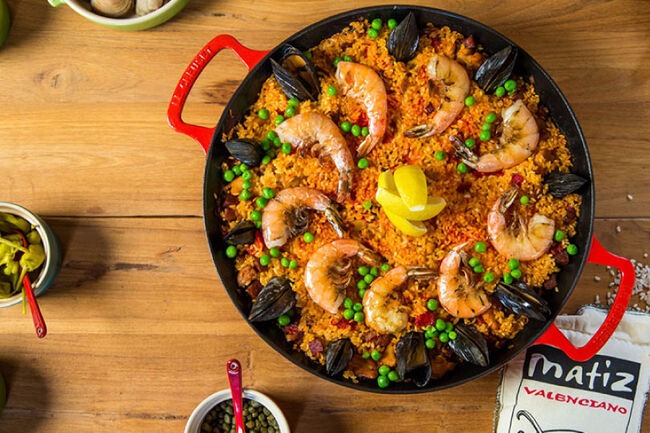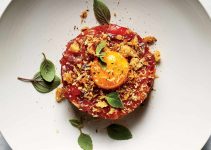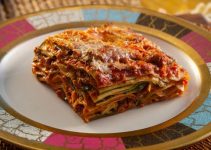Contents
Paella Mixtas is a beloved Spanish dish that combines a variety of meats, seafood, and vegetables to create a symphony of vibrant flavors and textures. This iconic dish hails from the Valencia region but has become a staple in Spanish cuisine and beyond. In this article, we will explore the origins, ingredients, preparation methods, and the cultural significance of Paella Mixtas. Get ready to savor the culinary joy of this Spanish classic as we dive into the rich tapestry of flavors that make Paella Mixtas a true delight.
The Origins of Paella Mixtas

Paella Mixtas, like all paellas, traces its roots to the eastern coast of Spain, particularly the region of Valencia. The word “paella” is derived from the Old French word “paelle,” which means pan, referring to the shallow, wide pan used to cook the dish. Traditionally, paella was a peasant’s meal, cooked over an open fire and made with whatever ingredients were available, including rabbit, chicken, and seasonal vegetables.
As the dish evolved, seafood was incorporated, leading to the creation of various paella varieties. Paella Mixtas, or mixed paella, is a fusion of both land and sea, featuring a delightful combination of meats (like chicken and rabbit) and seafood (such as shrimp, mussels, and clams), along with vegetables and aromatic spices. This combination highlights the versatility and rich culinary heritage of the dish.
The Ingredients: A Symphony of Flavors
Creating an authentic Paella Mixtas involves selecting the freshest and highest-quality ingredients. Here’s a breakdown of the key components:
Rice
The foundation of any paella is rice. Short-grain rice, such as Bomba or Calasparra, is preferred for its ability to absorb flavors while maintaining a firm texture. This type of rice ensures that each grain is infused with the rich, savory essence of the dish.
Meats
Paella Mixtas traditionally includes a combination of meats, often chicken and rabbit. These proteins add depth and heartiness to the dish. The chicken is usually cut into smaller pieces, and the rabbit provides a slightly gamey flavor that complements the other ingredients.
Seafood
The seafood in Paella Mixtas typically includes shrimp, mussels, clams, and sometimes squid or scallops. The variety of seafood adds a briny sweetness and a range of textures that make the dish truly special. Fresh seafood is essential to capture the authentic taste of the ocean.
Vegetables
A variety of vegetables are used in Paella Mixtas to add color, flavor, and nutrition. Common choices include bell peppers, tomatoes, peas, and green beans. These vegetables provide a balance of sweetness and acidity that enhances the overall flavor profile.
Aromatics and Spices
To achieve the signature flavor of Paella Mixtas, a blend of aromatics and spices is essential:
- Garlic and Onions: These form the aromatic base, imparting a savory depth.
- Saffron: Known as the world’s most expensive spice, saffron gives paella its distinctive golden hue and subtle floral flavor.
- Paprika: Adds a smoky, slightly sweet note that complements the other ingredients.
- Bay Leaves: Provide a mild, herbal aroma that enhances the complexity of the dish.
- Olive Oil: High-quality extra virgin olive oil is used to sauté the ingredients and impart a rich, fruity flavor.
Broth
The broth used in Paella Mixtas is crucial for developing the dish’s depth of flavor. A combination of chicken and seafood broth is often used, enriched with the juices released from the meats and seafood during cooking. This broth is absorbed by the rice, ensuring every bite is packed with savory goodness.
Preparation: Crafting the Perfect Paella Mixtas
Making Paella Mixtas is a labor of love that requires patience and attention to detail. Here’s a step-by-step guide to crafting this Spanish classic:
Step 1: Preparing the Ingredients
- Rice: Rinse the rice under cold water to remove excess starch. Set aside.
- Meats: Cut the chicken and rabbit into small, manageable pieces. Season with salt and pepper.
- Seafood: Clean the seafood thoroughly. Devein the shrimp, scrub the mussels and clams, and slice the squid if using.
- Vegetables: Dice the bell peppers and tomatoes. Set aside the peas and green beans.
Step 2: Sautéing the Aromatics and Meats
- In a large paella pan, heat a generous amount of olive oil over medium heat.
- Add the chopped onions and garlic, sautéing until fragrant and translucent.
- Add the chicken and rabbit pieces to the pan, browning them on all sides. This step is crucial for developing the rich, caramelized flavors that form the base of the dish.
Step 3: Building the Flavor Base
- Add the diced bell peppers and tomatoes to the pan, cooking until they begin to soften.
- Stir in the paprika and saffron, allowing the spices to bloom and release their aromas.
- Add the rice to the pan, stirring to coat each grain with the flavorful mixture.
Step 4: Adding the Broth
- Pour in the chicken and seafood broth, ensuring that the rice is evenly covered.
- Add the bay leaves and season with additional salt and pepper if needed.
- Bring the mixture to a boil, then reduce the heat to a gentle simmer.
Step 5: Incorporating the Seafood and Vegetables
- Arrange the shrimp, mussels, clams, and squid over the rice, gently pressing them into the mixture.
- Scatter the peas and green beans across the top.
- Cover the pan with a lid or aluminum foil and let the paella cook undisturbed for about 20-30 minutes, or until the rice is tender and the seafood is cooked through.
Step 6: Creating the Socarrat
- The socarrat is the prized crispy layer of rice at the bottom of the pan. To achieve this, increase the heat to medium-high for the last few minutes of cooking, listening for a gentle crackling sound.
- Be careful not to burn the rice; the goal is to create a flavorful, caramelized crust.
Step 7: Serving
- Remove the pan from the heat and let it rest for a few minutes.
- Garnish with fresh parsley and lemon wedges.
- Serve the Paella Mixtas directly from the pan, encouraging guests to enjoy the different textures and flavors.
The Cultural Significance of Paella Mixtas
Paella Mixtas is more than just a dish; it is a cultural icon that represents the rich culinary heritage of Spain. Traditionally, paella is enjoyed during family gatherings, festivals, and celebrations, symbolizing community and togetherness. The communal nature of paella, with everyone gathering around the pan to share a meal, reflects the Spanish values of hospitality and conviviality.
In Valencia, the birthplace of paella, Sunday paella gatherings are a cherished tradition. Families and friends come together to cook and enjoy paella, often accompanied by sangria or Spanish wine. This tradition has spread throughout Spain and beyond, making paella a beloved dish worldwide.
Health Benefits: A Nutritious and Balanced Meal

Paella Mixtas is not only delicious but also offers a range of nutritional benefits. Here are some of the key health benefits of this Spanish classic:
High-Quality Protein
Paella Mixtas provides a balanced mix of high-quality protein from both meats and seafood. Protein is essential for muscle growth and repair, immune function, and overall health. The combination of chicken, rabbit, and seafood ensures a diverse array of amino acids.
Essential Vitamins and Minerals
The variety of ingredients in Paella Mixtas means it is packed with essential vitamins and minerals. Seafood is rich in omega-3 fatty acids, which support heart health and reduce inflammation. The vegetables provide vitamins A, C, and K, as well as folate and fiber. Saffron, although used sparingly, is known for its antioxidant properties and potential health benefits.
Low in Saturated Fats
Paella Mixtas is relatively low in saturated fats, especially when compared to many other meat-centric dishes. The use of olive oil instead of butter or other animal fats contributes to a healthier fat profile, providing monounsaturated fats that are beneficial for heart health.
Rich in Antioxidants
The inclusion of vegetables, garlic, onions, and spices in Paella Mixtas means the dish is rich in antioxidants. These compounds help protect the body from oxidative stress and inflammation, contributing to overall health and well-being.
Conclusion
Paella Mixtas is a culinary masterpiece that brings together the vibrant flavors and diverse ingredients of Spanish cuisine. From the tender meats and fresh seafood to the aromatic spices and colorful vegetables, every element of Paella Mixtas contributes to a dish that is both delicious and nutritious. Whether enjoyed during a festive gathering or a cozy family meal, Paella Mixtas embodies the joy of sharing good food with loved ones.
By following the steps outlined in this article, you can create an authentic Paella Mixtas that will transport you to the wdbos sunny shores of Spain. So, gather your ingredients, fire up the stove, and savor the rich, vibrant flavors of this Spanish classic. Paella Mixtas is not just a meal; it’s an experience that celebrates the art of cooking and the joy of eating.



